Hyundai Elantra: Controller / Heater & A/C Control Unit (DATC)
Hyundai Elantra (CN7) 2021-2025 Service Manual / Heating, Ventilation and Air Conditioning / Controller / Heater & A/C Control Unit (DATC)
Components and components location
| Components |
| [This illustration shows the LHD type. RHD type is symmetrical.] |
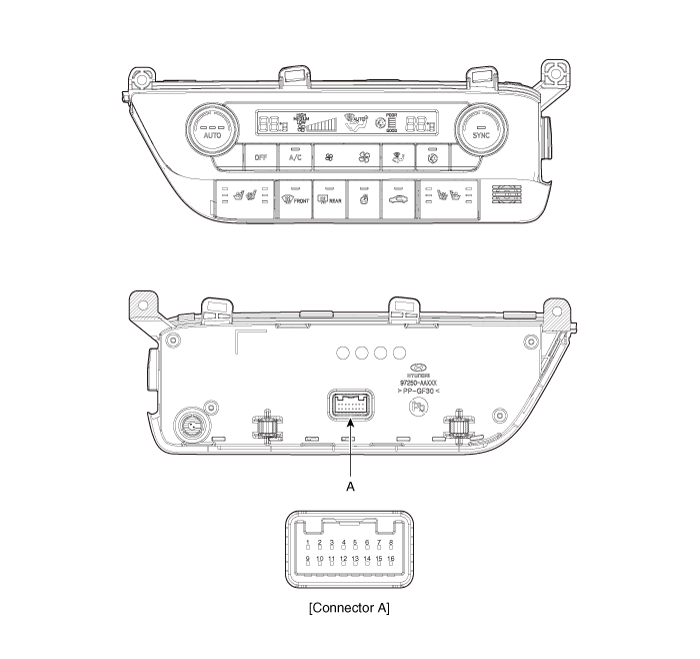
[Connector A]
|
Pin No
|
Function
|
Pin No
|
Function
|
| 1 | Battery | 9 | IGN2 |
| 2 | ILL+ (TAIL) | 10 | ISG Battery (+) |
| 3 | - | 11 | IGN1 |
| 4 | LIN BUS | 12 | HTD |
| 5 | - | 13 | - |
| 6 | - | 14 | - |
| 7 | - | 15 | - |
| 8 | RHEO (ILL-) | 16 | Ground |
Repair procedures
| Self Diagnosis |
| 1. | Self-diagnosis process.
|
| 2. | Fault code display
|
| 3. | If fault codes are displayed during the check, Inspect malfunction causes by referring to fault codes.
|
| 4. | Fail safe
|
| Replacement |
| 1. | Disconnect the negative (-) battery terminal. |
| 2. | Remove the crash pad lower panel. (Refer to Body (Interior and Exterior) - "Crash Pad Lower Panel") |
| 3. | Remove the steering column shroud upper panel (A).
|
| 4. | Remove the gear knob & boots (A) pull both of it up.
|
| 5. | Using a screwdriver or remover, remove the floor console side garnish (A).
|
| 6. | Using a screwdriver or remover, remove the console upper cover (A).
|
| 7. | Press the lock pin, separate the console upper cover connector (A).
|
| 8. | Using a screwdriver or remover, remove the crash pad garnish [CTR] (A).
|
| 9. | After loosening the mounting screws, remove the A/C & heater controller unit (A).
|
| 10. | Disconnect the A/C & heater controller connector (A) and hose (B).
|
| 11. | To install, reverse the removal procedure.
|
 Heater Control Unit
Heater Control Unit
Components and components location
Component Location1. Heater control unitComponents[Connector A]
Pin No
Function
Pin No
Function
1Mode control actuator (Feedback)21Mode control actuator (Vent)2Intake actuator (Feedback)22Mode control actuator (DEF)3Passenger's temperature control actuato..
Other information:
Hyundai Elantra (CN7) 2021-2025 Owner's Manual: Fuel filler door
Opening the fuel filler door The fuel filler door must be opened from inside the vehicle by pulling up the fuel filler door opener. 1. Turn the engine off. 2. Pull up the fuel filler door opener. 3. Pull the fuel filler door (1) out to fully open. 4. To remove the fuel tank cap (2), turn it counterclockwise. You may hear a hissing noise as the pressure inside the tank equalizes. 5. Place t..
Hyundai Elantra (CN7) 2021-2025 Service Manual: Rear Seat Back Cover
Components and components location Component Location [General type]1. Rear seat back cover [LH]2. Rear seat back cover [RH][N Line]1. Rear seat back cover [LH]2. Rear seat back cover [RH] Repair procedures Replacement[LH] • When removing with a flat - tip screwdriver or remover, wrap protective tape around the tools to prevent damage to compo..
Copyright © 2025 www.helantra7.com

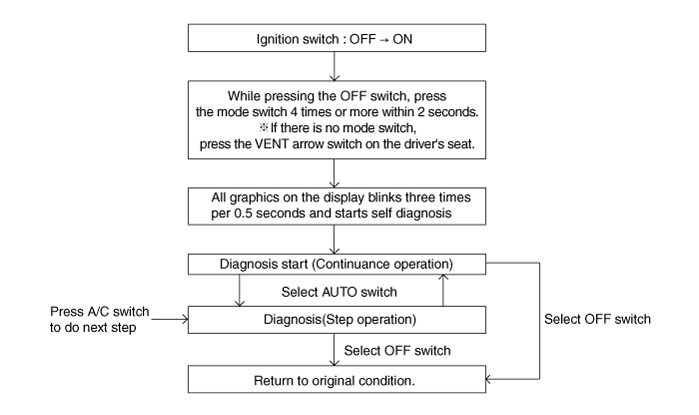





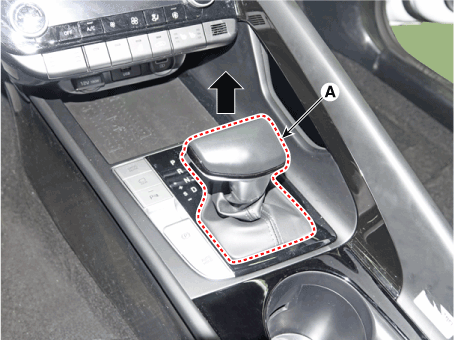
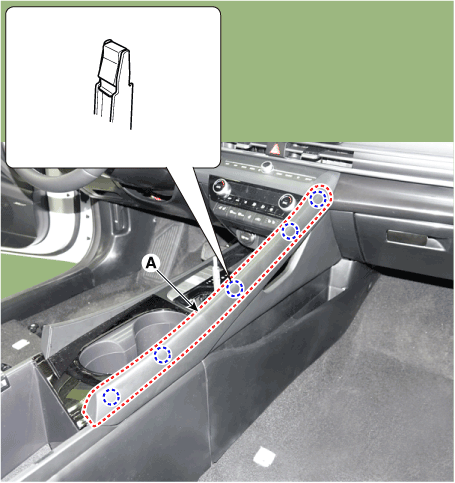
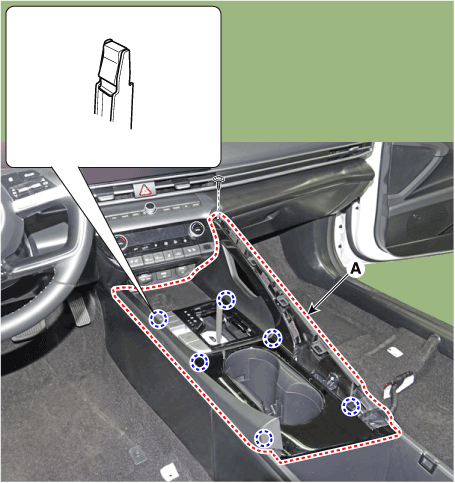
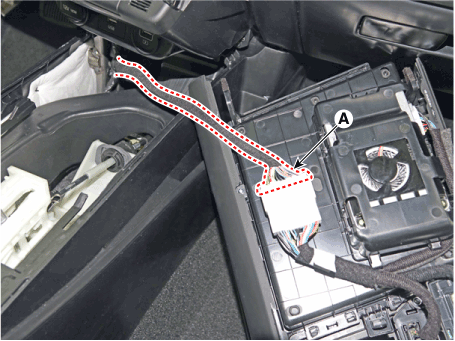
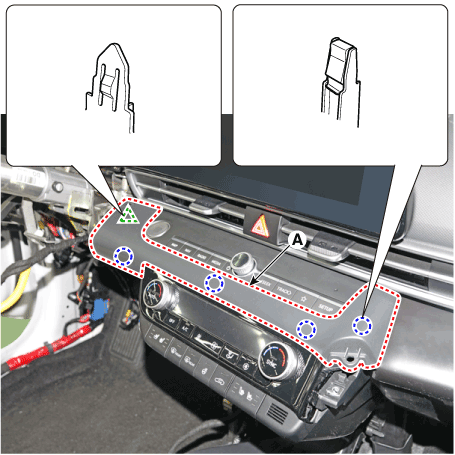
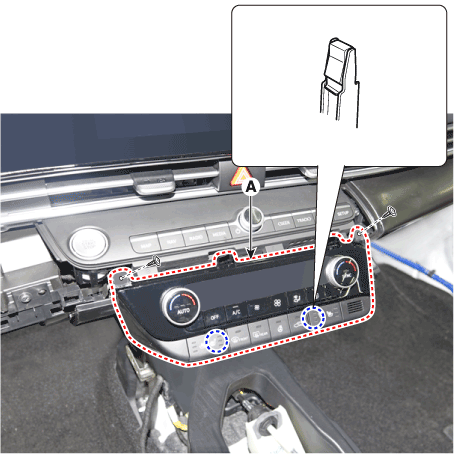
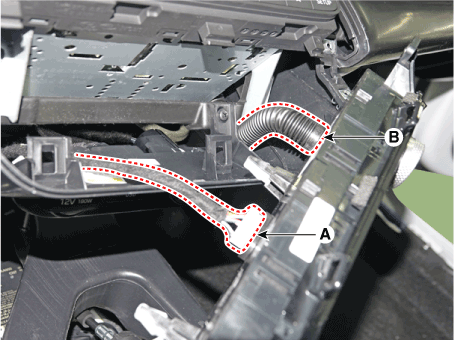

.png)